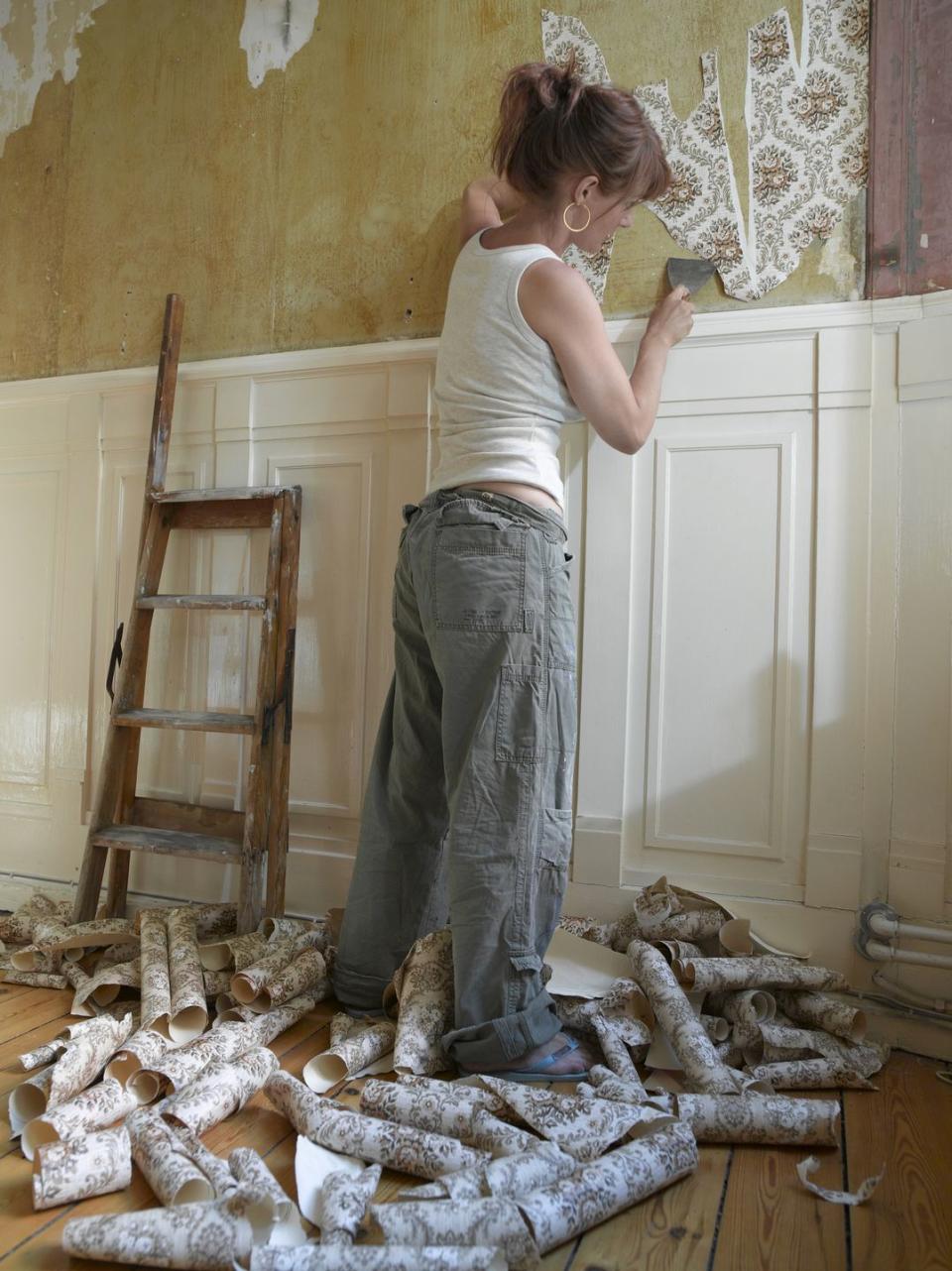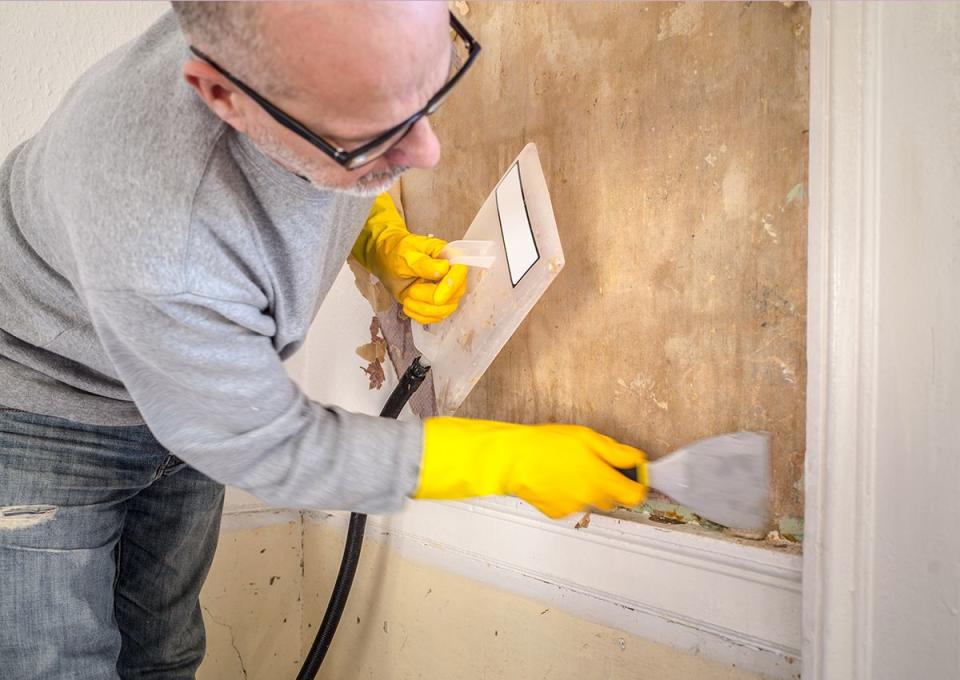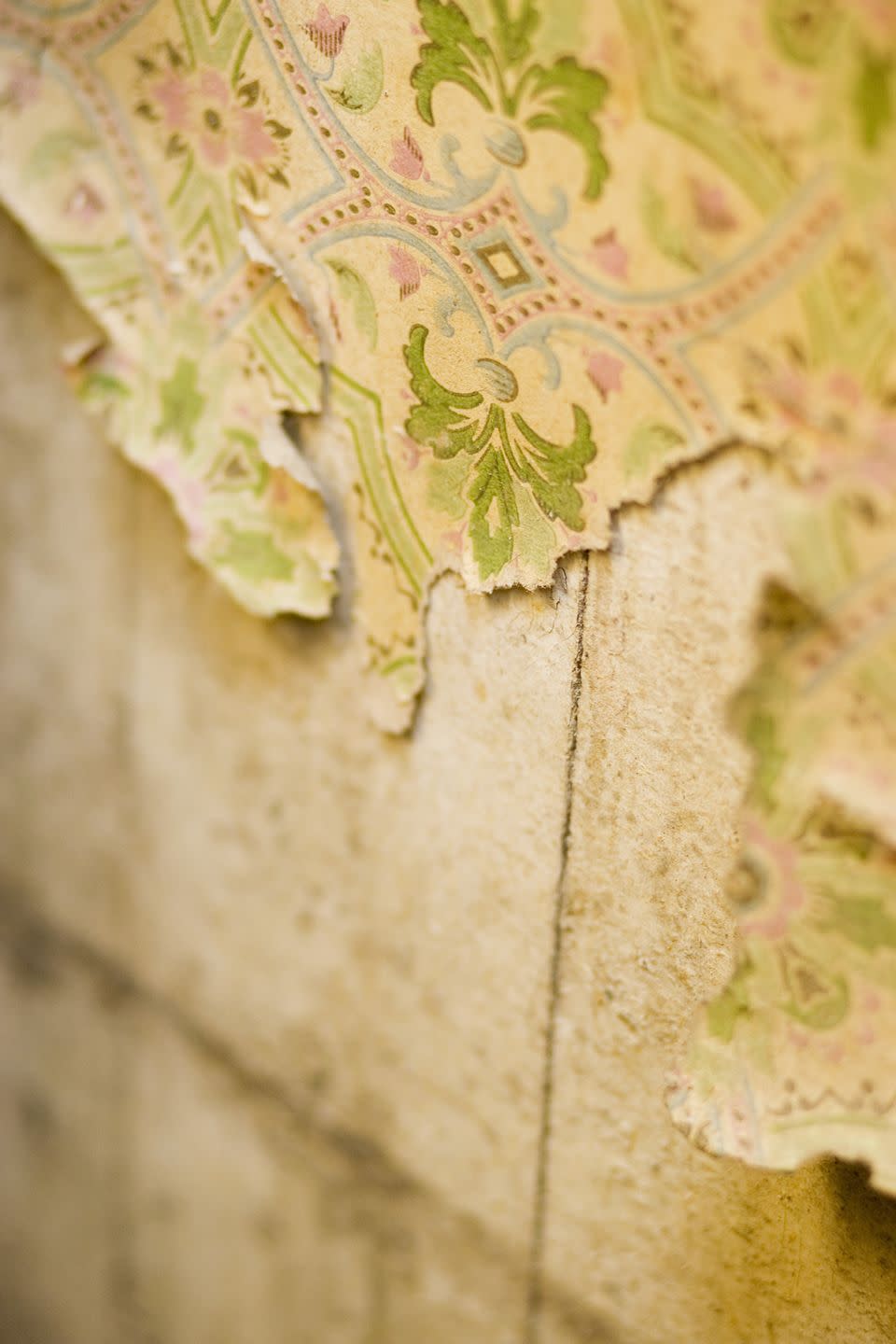The Best (and Easiest) Way to Remove Wallpaper

"Hearst Magazines and Yahoo may earn commission or revenue on some items through these links."
Wallpaper is back in style again, but that doesn't necessarily mean the wallpaper (or old-school border!) you inherited from previous homeowners is fitting for your personal taste. If it's time for it to come down, fear not. You can accomplish the task without losing your mind with this simple guide about how to remove wallpaper.
Once it's down you can add a punch of flair back to the wall with a new pattern (perhaps a removable wallpaper that will peel off with ease in the future) or a fresh coat of paint (try one of our editors' favorite wall colors). You might even be able to paint over your wallpaper, but be sure to read up on when it works and when it doesn't before going that route. Plus, check out fun ways to use wallpaper around your house (even in most inconspicuous places)!
Now, time to say so long to your current wallpaper without damaging your home's drywall—and without a steamer. We've got you covered, from necessary safety steps to essential removal techniques. Plus, find professional tips, including how to make a homemade wallpaper remover using fabric softener from your laundry room.
What to Know Before You Start Removing Wallpaper
Safety first. Removing wallpaper is going to be messy and wet affair (or at least damp) in the process, so make sure you start by turning off your electricity and taping off any outlets that are in the area where you are working. You'll want to remove the outlet covers so you can get to the wallpaper underneath.
We also recommend you start with a little mental preparation because the process will likely test your patience. Taking that wallpaper down can take lots of time and create a sticky mess (make sure you cover your baseboards and floors!), and midway through you might just question why you decided to do it in the first place. But it is doable, and the steps aren’t all that complicated. Give yourself about a weekend, give or take depending on square footage. By the end, you’ll have a nice clean wall ready to bring your next design vision to life.

How to Remove Wallpaper in Three Steps
Step 1. Test a wallpaper seam with the tip of a metal putty knife, taking care not to gouge the drywall with the knife. If the paper comes up and peels off easily, you’re in luck! Peel away. If it doesn’t, you’ll need to soften the glue before you can strip the paper off.
To do this, grab yourself a wallpaper scoring tool, and roll the tool over the wallpaper in small sections. The scorer will create small tears in the paper (don’t press too hard or you’ll damage your wall), which will allow either water or a wallpaper stripping solution to soften the glue underneath the paper.
Tip: Don’t use a plastic putty knife; they’re too thick to get under the paper. Also, consider filing down the edge of your metal putty knife so that it’s a bit more rounded. This will help you to avoid accidentally gouging your drywall when trying to lift up the paper.
Step 2. Spray the torn area of the wallpaper with the water or paper stripper (or dampen it using a wet sponge), and let sit for a few minutes to work on the glue. Test a small area using your fingernail—if the paper comes off easily, you’re in business. If not, repeat the wetting process and let it sit a bit longer to do its thing.
Tip: Some suggest using a one-to-one mixture of fabric softener and hot water for this! The hotter the water, the better, so wear gloves.
Step 3. When the perforated portion is wet and peels off easily when you test it, use the corner of your putty knife to strip off the paper. Don’t be surprised if the glue stays behind; we cover that piece of the puzzle in the next section. Repeat the entire process—scoring, wetting, scraping—until the wallpaper is gone.
How to Remove Wallpaper with a Steamer

Consider renting a wallpaper steamer if you don't own one or get a quality wallpaper steamer that only uses water from your local hardware store.
Step 1. Begin by placing the steam unit’s pad on the top of the wallpaper and hold it steady to soften the glue beneath the paper. Test an area for a short period of time (about 10 to 15 seconds).
Step 2. If the paper is loosened after your first, use a utility scraper to remove the section while wearing gloves. If the area is still holding firm, reapply the steamer pad for an additional 5 to 15 seconds.
Step 3. Continue short passes until the wallpaper is slightly wet and easily comes off the wall’s surface. Although you may be tempted to hold the steamer on the area for extended periods of time, this action can cause damage to the wall’s drywall or plaster and make the glue beneath even hotter. Repeat Steps 1-3 until you are finished.
Tip. Slow and steady wins the race to remove wallpaper with a steamer. It will also make the task much safer, and you’ll spend minimal time scraping off stubborn bits of paper and glue residue too.
How to Remove Wallpaper Glue
After you've removed all of the paper from a wall, you'll probably have sections or spots sticky with adhesive. The easiest way to remove these is to scrub the wall with hot soapy water (try liquid dish soap) and a sponge or washcloth. You want to get all of the residue off the walls, so don't be tempted to skip this and paint right over it. You'll risk creating a mess that won't work well for painting or repapering.
Tip: Really having a hard time removing the glue? Try upping your game to a gel stripper.
How to Remove a Wallpaper Border
Wallpaper borders are removed in the same way as full panels (see instructions above) with the added challenge that most, if not all, of the work takes place from a step stool or ladder.
How to Remove Really Old Wallpaper

Wallpaper that's decades old can be removed following the above tips and methods, too, but you may have to put a good deal of elbow grease into it, depending on whether it was professionally installed or not (professional installs tend to be harder to remove than DIY jobs). If your home is older, you may have plaster walls instead of drywall—the latter of which is softer and more prone to dampness and gouging—so be extra careful.
You Might Also Like

